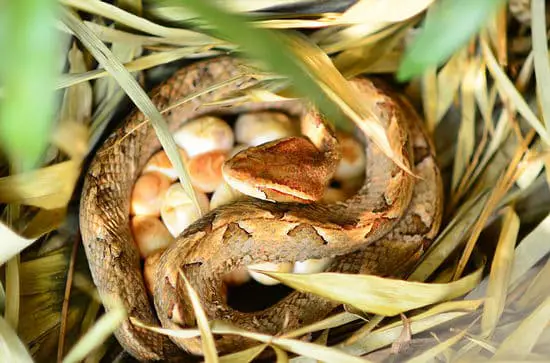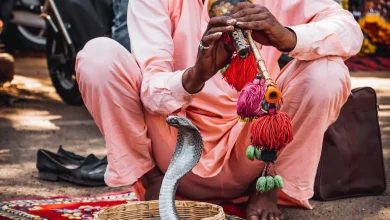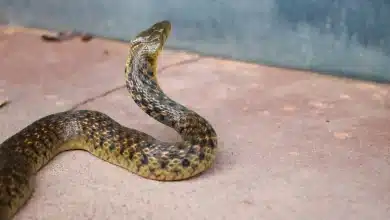Recent Snake Bites in Thailand – King Cobra and Malayan Pit Viper
Recent Snake Bites in Thailand – King Cobra and Malayan Pit Viper

Here’s a bit of news out of Krabi province. Just in the last month I’ve come across two people that were bitten by two of the worst snakes in the country, in all of the world really.
The first case was almost expected. I mean, you work with deadly snakes everyday, multiple times each day, and you’ll eventually slip up and one will get you. That’s what happened to a young 19 year old that works at a cobra show. He was doing the show with the king cobra (Ophiophagus hannah). He was on his knees and moving his head around to entice the snake to strike. He stopped moving for a brief second, and the snake struck at his shoulder. The bite was more of a scrape, but it definitely scraped the shoulder of the boy pretty deeply. His scar looks serious enough. To be bitten on the shoulder right there, near the heart and near some big blood vessels probably would not have resulted in a good situation had he been envenomated. But, he lucked out tremendously. The big cobra didn’t inject any venom. LUCKY OWEN!
As you probably know, king cobras have a venom that is not all that potent. I mean, it’s comparable with pit viper venom as far as cytotoxic damage it does, but it also has the neurotoxic component that renders muscle useless and stops the heart and breathing. The exceptional power of the king cobras bite is that it can transfer up to 7 ml of venom into the body of a victim. The usual amount is about .5 ml, and that’s enough to kill most people with a good bite.
The second case of snake bite in Krabi happened to a woman that was working in her garden at mid-day. There had been no rain at all for about two months prior to the bite incident. She kept her garden water on a lot during the day so she could water her plants. The snake, a Malayan pit viper, was coiled under some plants enjoying the cool water. She put her hand close to where it was, and ZAP. It tagged her with both fangs on the hand. She quickly wento to the hospital, but never did present any symptoms. Another dry bite! So, two-for-two here in Krabi.
Venomous snake bites result in a dry bite around 50% of the time. That means that you have a 50-50 chance that there will be no other complications other than the damage to your skin where the fangs penetrated.
Be careful in your garden, and walking around. May through December is the time in Thailand and many bordering countries where snakes are at their most abundant and most active. Be especially careful not to tread on or near the Russell’s Viper or Malayan Pit Viper. These are two vipers that are well hidden on the ground and don’t tend to move out of the way when someone is walking toward them. At night – use a flashlight (torch) to see where you’re putting your feet as you walk. You do NOT want to be bitten by a venomous snake in Thailand. Take care!





My friend got stroke by a pit viper last week. It was in the bar where People walk all the time. It was laying on the concreate floor and just scratshed her. The third bloodsample showed poisen, so they gave here anti venom. She is fine now.
Yesturday I was turning on the lights around the bungalows here. We just talked about the pit viper. I had to wathering the plantes here, and it had bacome dark allready. I had the dog around me, and steped clouse to a viper. About 3 feet away from it. Turned on the lights. Afther some minuttes I come back and started to wather some roses. The wather made the viper to move when I saw it. I was even clouser to it the secound time. It moved away from me. I thought it was a python. It just crouled up again. It had eaten a fish that had jumped out of the pound we have here, that I spotted just before I went to the beach for sunset. I went in to this page and saw the pictures of the pit wiper and pictures of the phyton and realised it might me the viper, and it was. We have had 7 vipers here the last 6-7 weeks. To put them back in the jungle is not so easy when there is farms around in the region. I am not so experienaed with snakes, even thoug I have more experiance than moust people in Norway.
This happend in Nakhon Si Tammarath.
Hi there,
Do you mean the brown pit viper? The Malayan pit viper (C. rhodostoma)?
I haven’t heard that they will eat fish. I wonder if you’re seeing the puff-faced water snake instead.
Send a photo when you can.
Cheers!